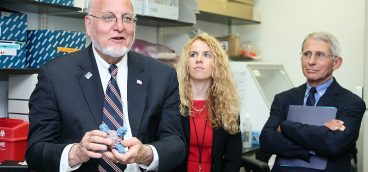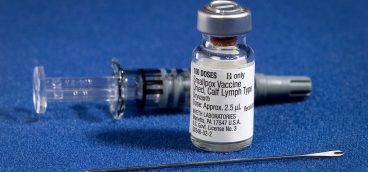Beating Long COVID

Among the many things medical science didn’t anticipate about the pandemic was the phenomenon of so-called “long COVID.” People, many of whom who were double vaxxed and boosted, got sick and never got completely better.
Symptoms vary, but may include serious fatigue, fever, cough, “brain fog,” vertigo, digestive troubles, loss of smell and/or taste, depression, joint and muscle pain, diarrhea, and so on. Harvard magazine listed a total of 40 well-documented long COVID symptoms. These conditions can last for months or even years.
Economists at Harvard calculate that the total societal costs of long COVID – $3 trillion – are higher than the costs of acute COVID. Yet medical science has paid little attention to it until very recently.
No doubt the causes of long COVID are complex, but one key feature most episodes have in common is an over-active immune system. For unknown reasons, many people’s immune systems overreact to the presence of COVID.
Let’s begin by reminding ourselves that when we feel “sick” it’s not directly because of a virus, it’s a consequence of our immune response to the virus. When a pathogen enters our bodies our immune system sizes up the threat and reacts accordingly. In most cases the immune response is so modest we aren’t even aware of it – the immune system attacks and destroys troublesome pathogens on a routine basis, day-in and day-out.
Occasionally, we do feel sick. The common cold virus is perceived by our immune systems as enough of a threat that it ratchets itself up and we feel ill. The flu virus is perceived as a still-greater threat and when our immune system gears up to fight the flu virus we feel even sicker. When we have a fever, that’s our immune system at work – because many pathogens can’t survive at higher temperatures.
Over-active immune responses are extremely common. Do you have allergies? Your problem is that your immune system is over-reacting to something – foods, medicines, insect bites, pollens, dust, whatever. Many people suffer from common autoimmune diseases such as:
Psoriasis. In the case of psoriasis, white blood cells (T cells) mistakenly attack our skin cells, causing the skin cell production process to go into overdrive.
Lupus. Lupus occurs when our immune system mistakenly attacks healthy tissue, causing inflammation in parts of the body such as the skin, joints, kidneys, heart or lungs.
Multiple sclerosis. In MS the body’s immune system mistakenly attacks myelin, the fatty material that insulates the nerves of our brains, spinal cords, and optic nerves.
And, of course, organ transplant patients have to be treated with powerful immunosuppressant drugs to prevent rejection of the transplanted organ by their immune systems.
In the case of COVID a similar process occurs – our immune system overreacts and begins to attack not the COVID virus, which has already been defeated, but our own bodies. No one is sure why this happens, any more than anyone knows why some people get lupus or MS.
Perhaps it’s the very novel character of COVID that’s to blame. Our immune system’s memory cells (white blood cells like B-lymphocytes and T-lymphocytes) keep track of every microbe the immune system has encountered since we were born. This allows our bodies to quickly recognize and attack microbes as they reappear throughout our lives. So maybe it is the case that when the immune system encounters a virus that is truly novel, like the coronavirus, it overreacts, just in case.
Or perhaps the COVID virus hasn’t been completely eradicated from our bodies – it’s beaten and bloodied and in full-scale retreat, but is still lurking here and there, hoping to hide out and evade attack from our immune system. There isn’t enough virus left to be detected through viral or antibody tests, but the immune system knows it’s there and remains in attack mode.
In any event, the immune system overreacts. The key players in this overreaction are cytokines, “signaling” molecules that allow our bodies’ cells to talk to each other. Almost every organ in the human body contains cells with cytokine receptors. The first cell with a cytokine receptor to notice a foreign pathogen immediately sends messages to other cells to react, creating the immune response.
Cytokines direct the cell walls of blood vessels to become more porous, allowing blood to leak into the surrounding tissue, creating what we call inflammation. Immune cells can then travel via the blood and begin the healing process.
At first, immune cells don’t secrete cytokines intended for any specific receptors, but instead the cytokines will target the entire body, causing fever, achy joints and fatigue. Only later will a more targeted immune response occur.
This generic response happens slowly for a reason. A rapid immune response, in which very high volumes of cytokines are released, would cause hyperinflammation, which can lead to organ damage. By rolling out the cytokines slowly, we may feel sicker-for-longer, but the slower response protects the body from collateral damage.
Alas, the cytokine response sometimes goes haywire. Far too many cytokines can be released, resulting in what is colloquially referred to as a “cytokine storm” (technically “cytokine release syndrome”). In other words, our immune system has responded far too aggressively to the COVID threat and is now attacking our bodies instead of the virus.
A cytokine storm can cause hyperinflammation, as noted above, resulting in symptoms such as (I hope you’re sitting down): fever, chills, tiredness, nausea, dizziness, diarrhea, headache, cough, joint pain, muscle pain, shortness of breath, confusion (or “brain fog”), etc., etc.
Cytokine storms can lead to serious medical emergencies – they can worsen quickly and become lethal. More often, they settle into long-term overreactivity, causing persistent inflammation, pain, flu-like symptoms, and eventually permanent damage.
Next week we’ll follow the journey of one hapless long COVID patient – me.
Next up: Beating Long COVID, Part 2










